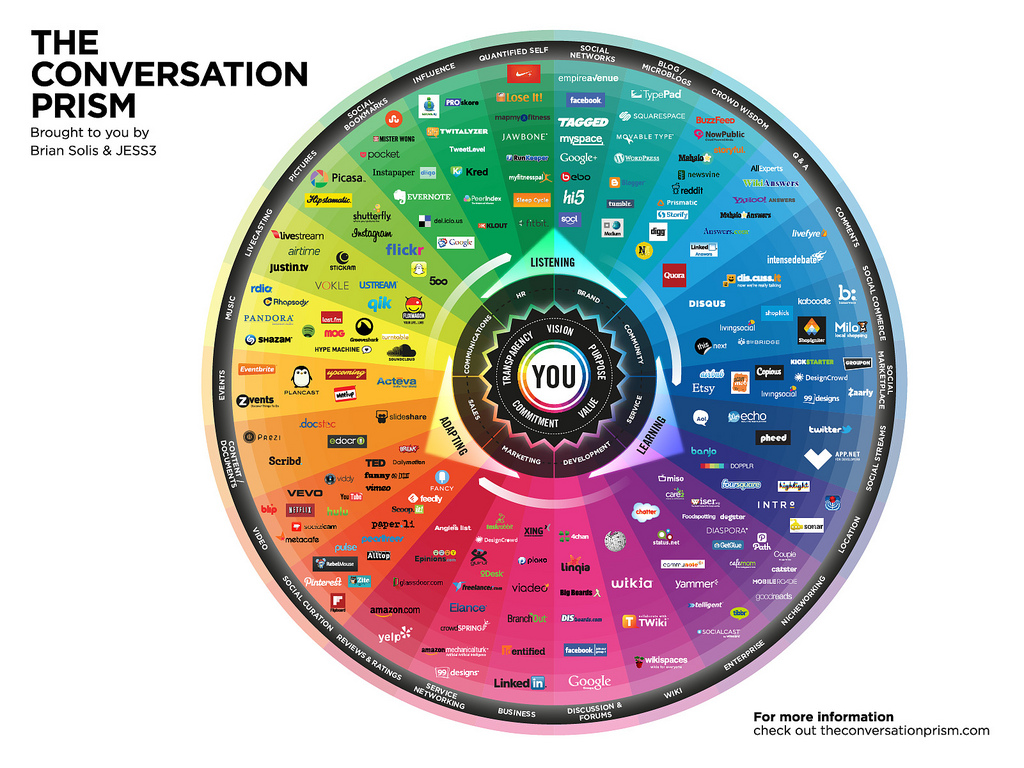What is the best social media platform? Part Two
16 October 2014 By Northern Lights

 I’ve embarked on an ambitious bid to provide a quick and simple social media guide that profiles the leading platforms and provides useful suggestions on how businesses can make the best use of them.
I’ve embarked on an ambitious bid to provide a quick and simple social media guide that profiles the leading platforms and provides useful suggestions on how businesses can make the best use of them.
In part one of the blog I looked at the social media big five and highlighted why every business should be utilising these platforms to seize on digital opportunities. In part two, I’ll be offering an insight into the rising stars of the social media world and also be looking at the next generation of platforms that are aiming to become the next big thing.
For those businesses already exporting or looking to break into international trade, I’ve also shared some insights into some of the world’s leading alternative social media platforms that have large followings in key countries.
Put simply, the more social media platforms you use to share content, the greater an impact you will have on your online reputation. A greater online reputation leads to a higher profile in search engine rankings and that means more business.
The social media rising stars
- Pinterest – The popularity of image-based platforms is on the rise and Pinterest is one of the best. With around 70 million users, Pinterest is a powerful tool for promoting your offer through pictures. By allowing users to “re-pin” content, it allows engaging material to become viral quickly.
How should you use it? Businesses need to create boards that revolve around their core products. Also consider using infographics to illustrate your offer and expertise as these are hugely popular. - Instagram – Primarily used as a platform to share personal photos by around 200 million users, Instagram is often overlooked as a marketing tool. However, the sheer number of people involved make this site worth considering.
How should you use it? It’s all about pictures, so use this site to demonstrate the personal side of your brand. Include people and be creative about how you demonstrate your offer. - Vine – Owned by Twitter, Vine is a powerful video marketing tool. Allowing users to create ultra-short videos, Vine enables businesses to quickly create simple marketing messages that can be quickly and easily shared.
How should you use it? Use this to spark conversations with customers, promote products and encourage brand advocates to share their experiences of interacting with you. Keep it light, simple and to the point. - Buzzfeed – A viral news feed and blog site that now attracts 150 million monthly viewers. Buzzfeed has soared in popularity in recent months and is an engaging mix of fun lists and hard-hitting news and opinion pieces that is winning over a wide audience of fans. It’s become so popular that even the UK Government has started posting content.
Why should you use it? The nature of the site means that businesses can post news and blogs that help to drive traffic back to their own site or promote their expertise. For best effect use numbered lists and keep it light-hearted and fun. - Tumblr – With 130 million blogs, Tumblr remains a popular platform for people to share more in-depth content. While I always say quality content should be hosted on your own site, it’s worth using Tumblr to link back to key messages on your website.
How should you use it? To deliver the maximum impact on the site, include keywords, images and video in your blogs. Always link back to content on your own site to generate traffic and improve search rankings. - Tagged – Claiming to have 300 million users worldwide Tagged is described as a “social discovery” site. Much like Facebook, it allows users to find and interact with friends, share content, comment and talk. The audience appears to be primarily US-based, but interaction around the rest of the world is growing.
How should you use it? With this site, it’s worth considering creating a business page to allow users to interact with your brand and view your offer. However, it’s probably best-suited for B2C. - StumbleUpon – Allowing users to “like” websites and content online and have them posted on their profile, StumbleUpon has attracted 30 million users. The unique aspect of this is that people who sign up are asked to list their interests. Once in, they are then directed to random sites others like within their fields of interest. For businesses, this means they can reach a wide, but targeted, audience quickly.
How should you use it? Like content that supports your core offer and link to valuable information on your own site to reach a targeted audience.
The social media young pretenders
- Ello – The new kid on the block, Ello is an advert-free platform still in testing mode that is accessed by invite only. Northern Lights associate Jonny Ross has recently written a blog about this new platform and points out that it currently appears to be primarily populated by artists and creative types.
How should you use it? From a business point of view, it’s worth watching the development of this site and is currently best suited to those looking to build contacts in the creative and digital sector. - Snapchat – Launched in 2011, Snapchat has been a popular destination for personal users with around 400 million snaps sent every day. On the platform, users see each snap for a few seconds, but it pretty much guarantees you have the attention of the user for that time.
How should you use it? It’s a quick and simple way to deliver a marketing message, but building and understanding followers takes time and it’s only really useful for consumer-facing businesses. - Diaspora – Billed as the “Anti-Facebook”, Diaspora has around a million users and is an open-source platform with no clear owner. Essentially, everyone owns their own data and businesses can use this platform to create their own social media network.
How should you use it? Offering pretty much everything that the big networks have, Diaspora has real potential but take-up has been slow. It’s still worth watching to see if it takes off. - Path – A mobile-only social network that limits you to just 150 friends and, again, you can upload a wide variety of content and join discussions. While it’s no use as a mass-marketing tool, Path has clear benefits for businesses wanting to communicate with a very-focussed community.
How should you use it? Consider using this to maintain existing relationships and build new connections with customers or create a community to discuss key industry developments. - Sulia – A new platform that aims to stop social media users from being bombarded with material that’s not relevant to them. Sulia aims to be a more refined experience and allows users to filter exactly what they see by using categories and key words.
How should you use it? From a business perspective, Sulia enables you to communicate with a smaller, but a much more relevant audience. - Bubblews – Allowing users to post blogs, share and syndicate content, Bubblews is similar to a number of sites. The key difference is that it shares any advertising revenue with users.
How should you use it? The numbers on the platform are currently relatively low, but that means more visibility for businesses and the increased possibility for links and external mentions. Plus, if your content proves popular, the associated advertising revenue will soon also begin to grow.
The social media international stars
As I’ve said, social media is an international community, but if you have business interests in a specific country it’s worth looking to engage with relevant platforms to that location. Below, I’ve briefly listed some of the world’s most popular alternative social media platforms for businesses to consider.
Many have the option to communicate in English, but if you’re going to target users in a specific country, consider getting the expertise you need to post in the local language.
- RenRen – Known as the Facebook of China, it’s exactly that. The platform has 160 million users and is great for accessing the burgeoning Chinese consumer market.
- VK – Available in a variety of languages, VK (originally known as Vkontakte) has 270 million users and is hugely popular across Russia and the former Soviet states. It offers similar services to Facebook and is worth considering for B2C brands working across Europe.
- Sina Weibo – Essentially the Chinese version of Twitter, but with more functionality beyond 140 characters. It has 300 million users and is a powerful tool for sharing content and driving traffic to your site.
- XING – A competitor to LinkedIn and available in multiple-languages, XING is most popular in Germany but is accessed in around 200 countries. It enables businesses to search for contacts, join discussions and share insights. Unusually, it also stages offline meetings in key cities around Europe to enable business leaders to meet face-to-face.
- Sonico – The Latin American Facebook with 50 million users in South America and other Portuguese and Spanish speaking countries.
- Viadeo – Another business site that has 55 million users worldwide and is available in multiple languages. Its primary audience is in Europe, but it has a large following in China with 4.5 million members.
Developing a social media strategy
 As I said at the start of this journey through the myriad of social media sites, sharing content across multiple platforms will always deliver the best results.
As I said at the start of this journey through the myriad of social media sites, sharing content across multiple platforms will always deliver the best results.
However, don’t spend sleepless nights trying to stay on top of multiple accounts. The key is to follow your customers to the platforms they are using and then focus on those.
The most important thing is to be active and engaged in the platforms and you must also measure your success. Set clear targets and, if you’re not meeting them, rethink your strategy or consider another platform.
Social media has huge potential for every business and I’d love to hear about your own experiences in the comments below.
